Sept 23, 2025 Waterfalls!
We went looking for waterfalls today, a short drive from our B&B, past the Ma:mu Skywalk. Driving through rain we thought we might just have taken a drive, but the skies cleared after we arrived at Henrietta campground where the trail to Nandroya Falls begins.
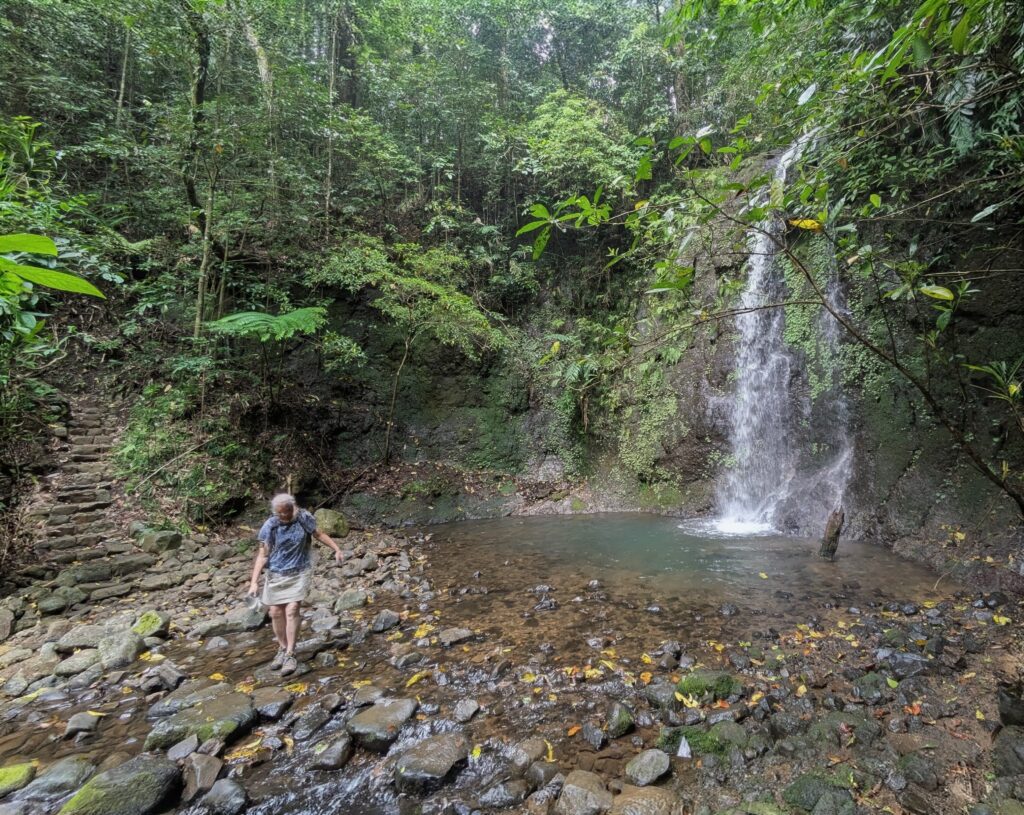
We followed Henrietta Creek past Silver Falls and deep into the Wet Tropics jungle!
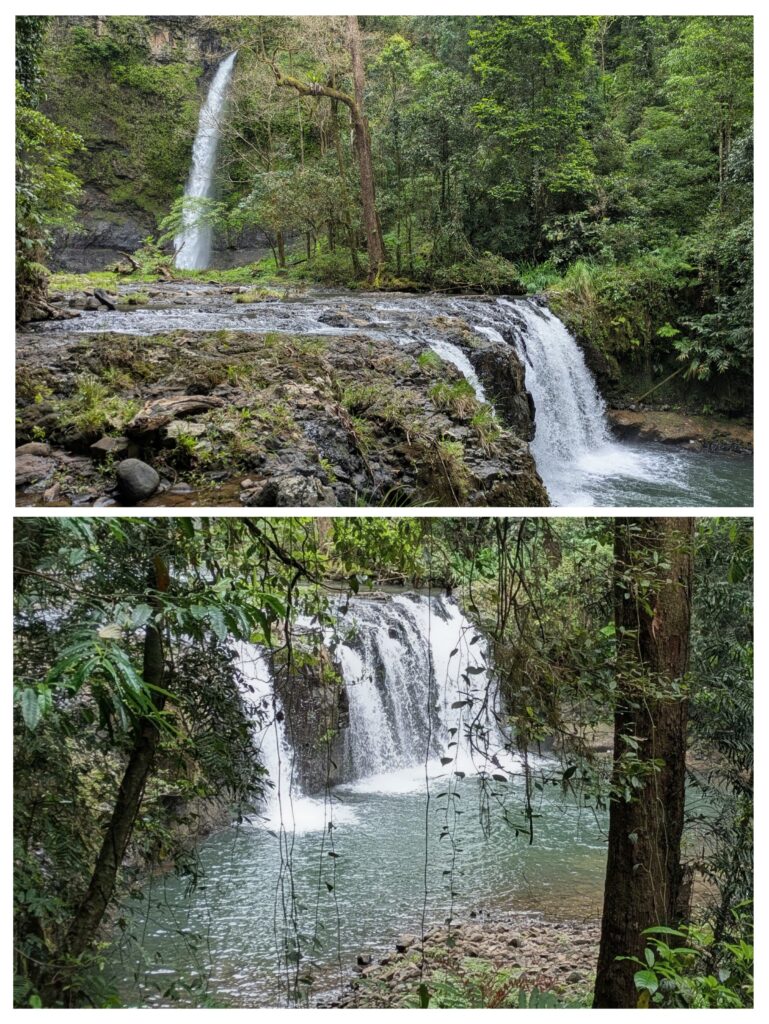
About 3km into the rainforest we approached the 2-tiered Nandroya Falls.
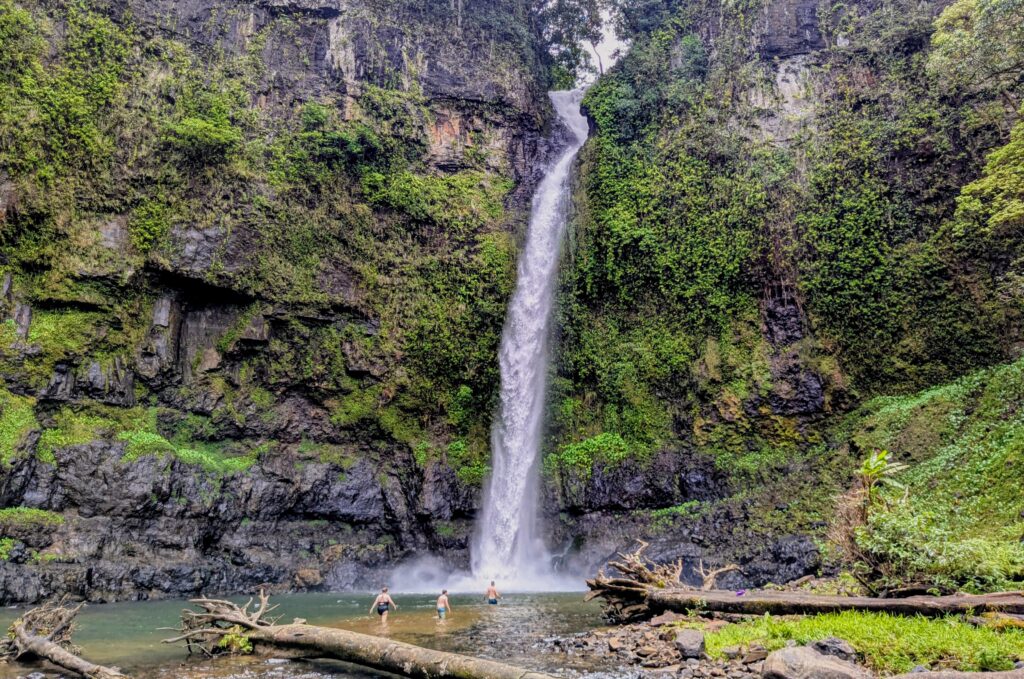
As we reached the main waterfall we realized how big it is! For reference you can see the 3 people wading into the pool to swim! We opted not to swim, we didn’t bring any towels, and we heard there are leeches in the water!
For a video of the falls click HERE.
We headed back to the trailhead via the less used trail, following Douglas Creek as it flows away from the falls. We encountered many waterfalls along the track, but they were mostly hidden in the jungle brush.
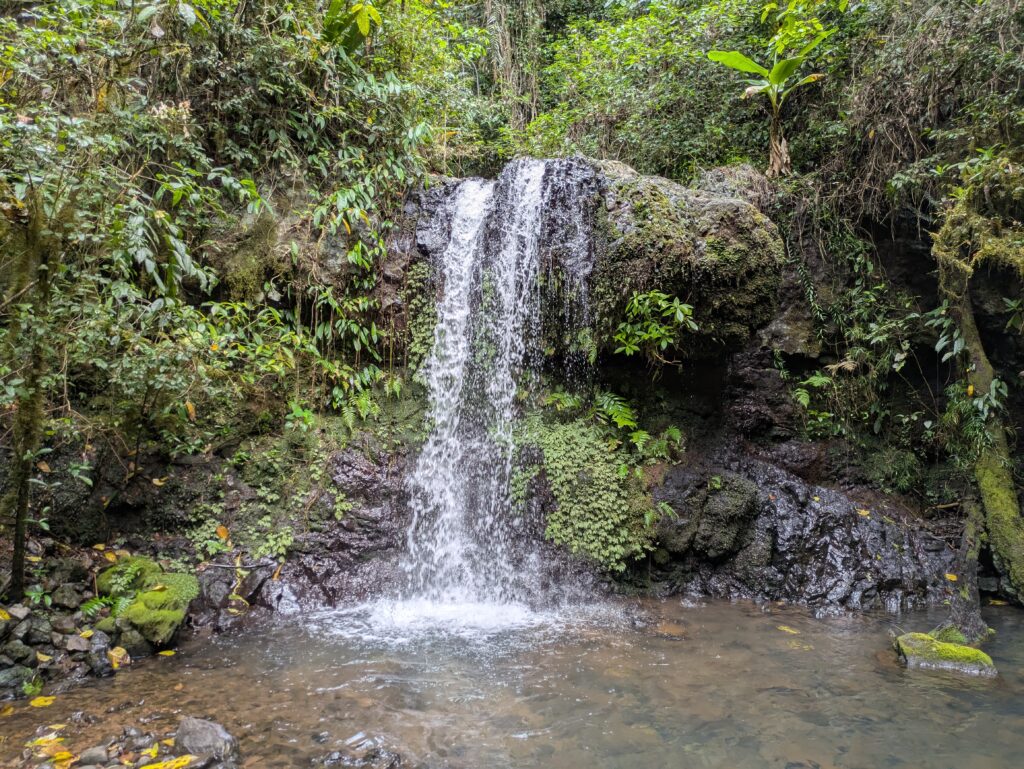
One picturesque falls spilled into a small pool that we had to cross via slippery rocks!
Sept 22, 2025 Parks-Part 2
After a lunch break we headed out to another park for the afternoon. Paronella Park, a short distance in the opposite direction from our rainforest adventure this morning, is a private park built in the 1930’s by José Paronella and his family. Mr. Paronella emigrated to Australia from Catalonia, Spain in 1913 and worked laboriously in the sugarcane fields until he could purchase, improve and resell sugarcane farms, amassing a fortune. He returned to Spain in 1924 and married, traveling throughout Europe for a honeymoon before heading back to Australia. He purchased 13 acres on Mena Creek, next to Mena Creek Falls to build his dream castle, pleasure gardens and reception center for the public to enjoy.
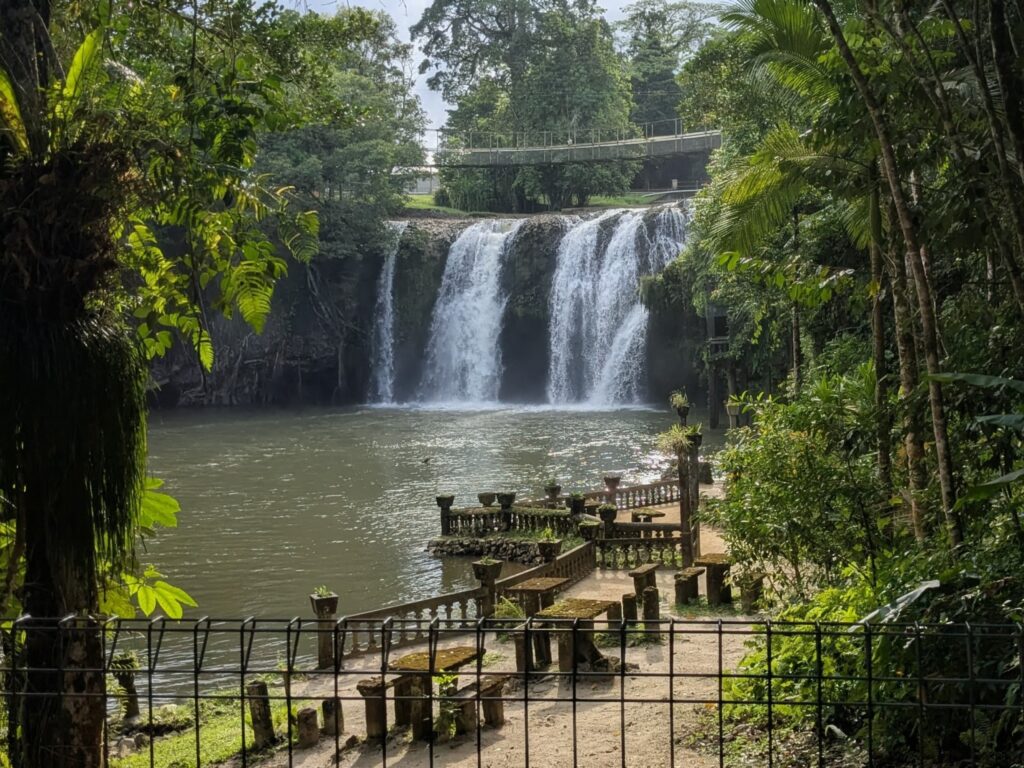
The pool below the falls is no longer protected from crocodiles, so swimming is not allowed! However, there are turtles, fish and eels that can be fed.
Opening in 1935 the park became a hub of entertainment for the region, having a ballroom with a stage for entertainment and a glittering ‘disco’ ball scattering multicolored light over the diners and dancers. On Saturdays the ballroom turned into a theater to show the latest movies. Picnic tables lined the creek shore and boats could be hired to paddle on the water. Nets kept crocodiles out so visitors could swim and frolic in the pool below the falls. During WW2 American soldiers relaxed and rejuvenated at the park with the locals. Mr. Paronella installed the first hydro-electric generating station in North Queensland in 1933 which was restored in 2009 and now generates the parks electricity!
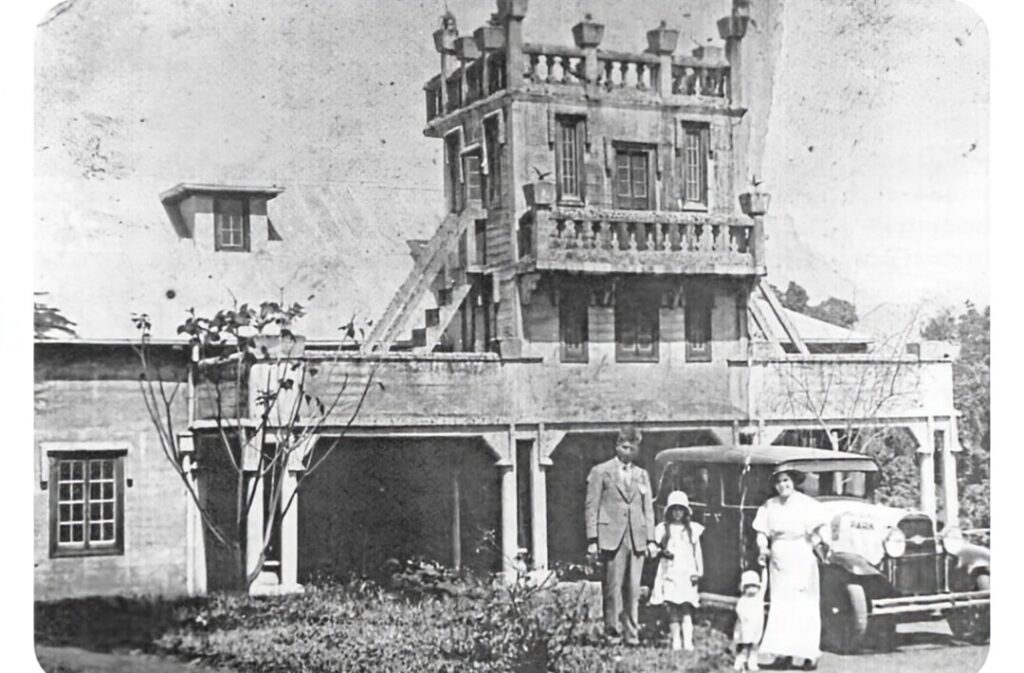
The park circa 1933.
In 1946 a devastating cyclone hit the park and destroyed many of the structures in the lower reaches of the park. José and family rebuilt what they could and carried on. José died in 1948 and the family continued running the park until the 1970’s when it was sold to a succession of entrepreneurs. Several cyclones and a fire were challenges and the park was eventually abandoned until the current owners bought it in 1993. Their goal is to maintain and preserve the park, not to restore it completely to its previous condition. The ‘pleasure gardens’ have been resurrected from the rainforest jungle that was engulfing the site and are a pleasure to explore.

The bamboo garden is mirrored in the kauri lane. Over 7000 trees were planted by Mr. Paronella, including these Queensland kauri trees that he knew he would never see reach maturity. He planted them for future generations to enjoy.
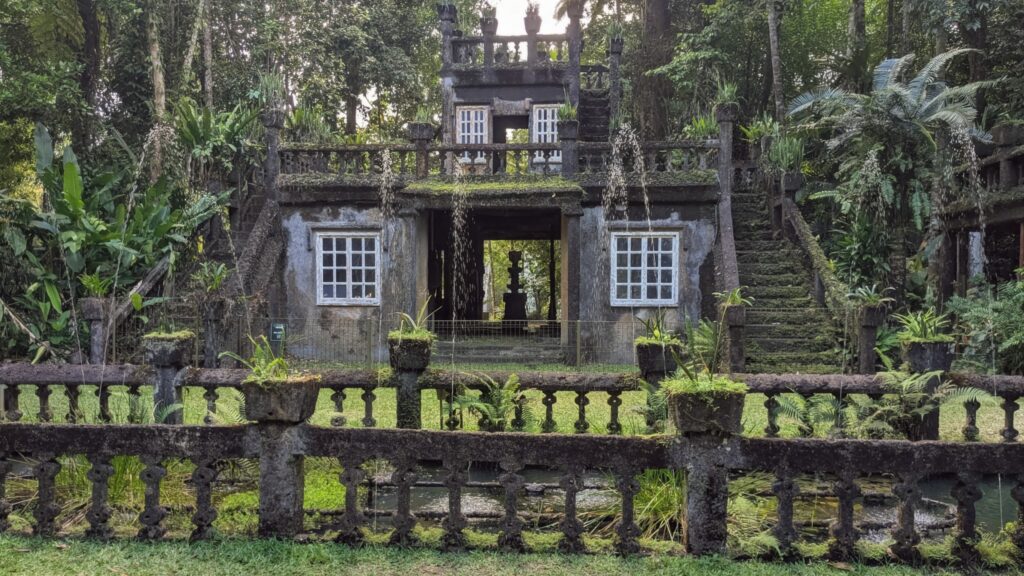
The ‘Lower Refreshment Rooms’ with the fountain surrounded by the cast concrete fence. There were tennis courts behind me, now used as seating for the colorful nighttime experience.
We decided to have dinner at the nearby Mena Hotel and return at dusk for the Evening Experience!
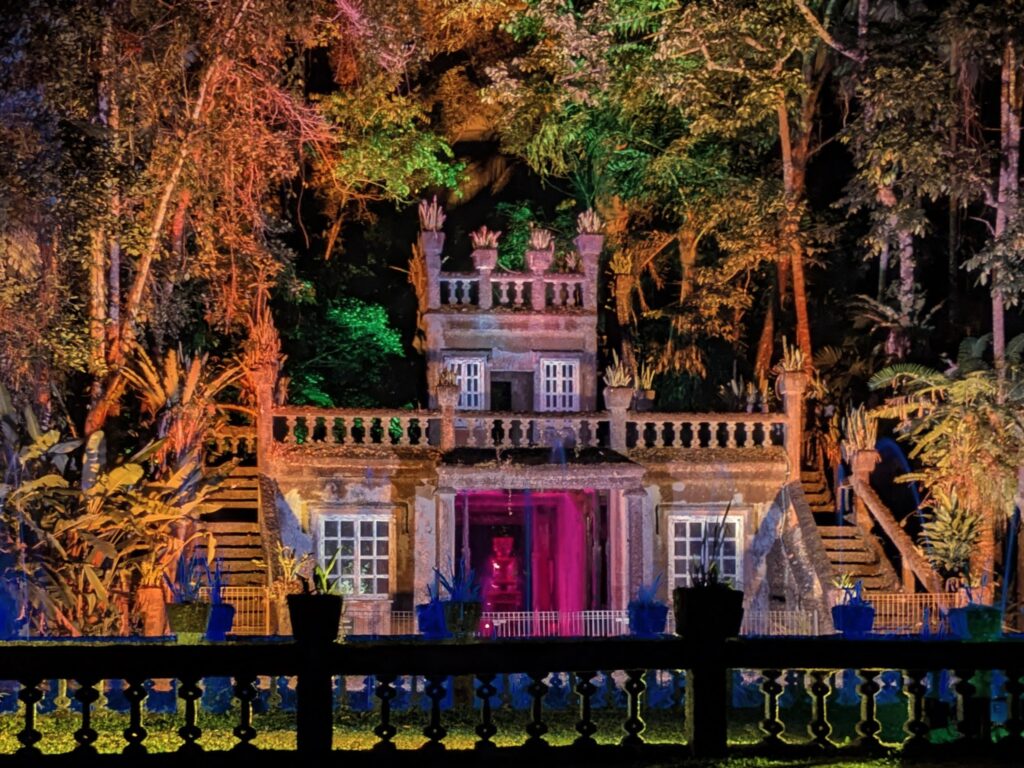
The castle is lit up with colorful lights with a rousing soundtrack including lightning and thunder to evoke the many cyclones the park has weathered!
Sept 22, 2025 Parks-Part 1
We ventured into the rainforest today, at the Ma:Mu Tropical Skywalk. The rainforest canopy walkway is in the traditional country of the Ma:Mu Aboriginal people and is part of the ‘Wet Tropics’ of northeast Queensland.
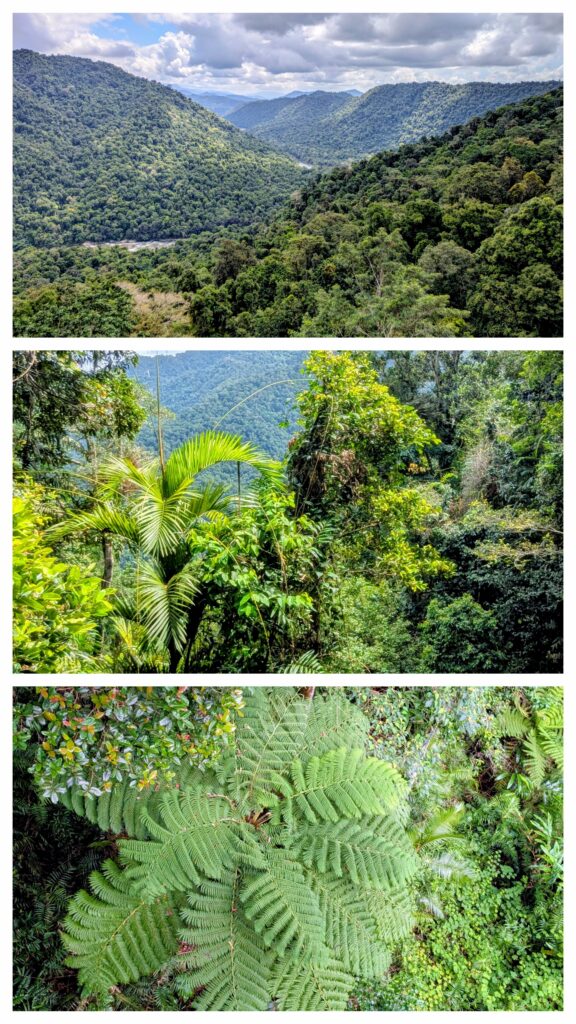
The walkway overlooks a gorge of the North Johnstone River which gives a rare viewpoint over the rainforest.
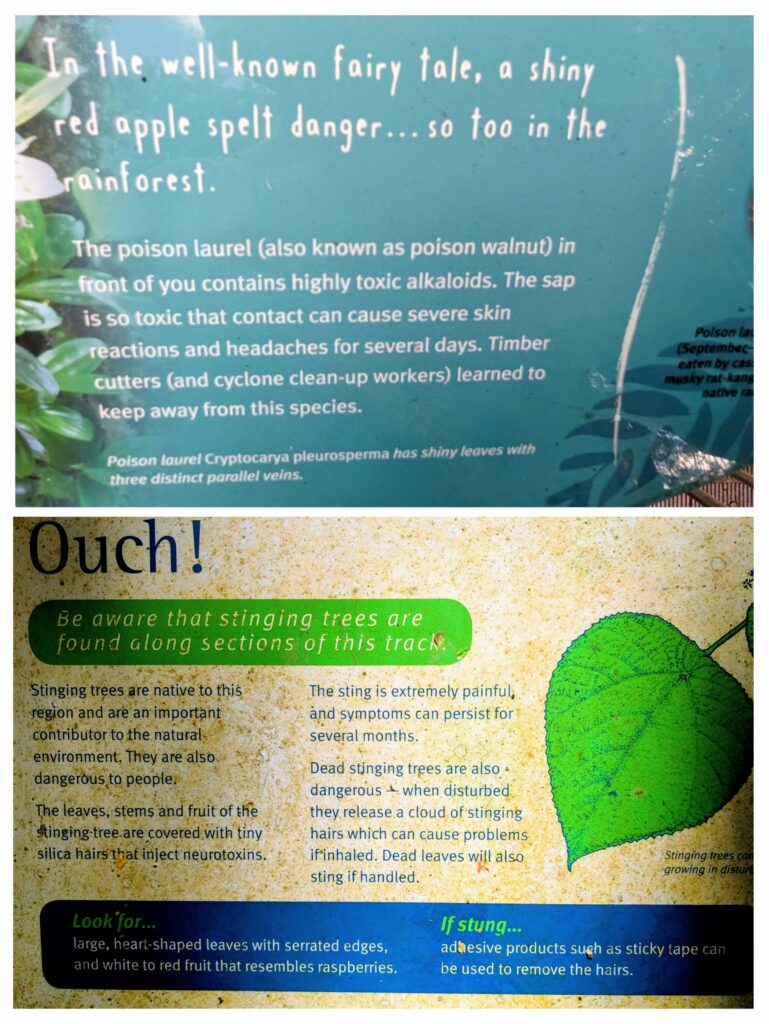
We discovered that it’s not only snakes and spiders that can harm you in Australia, but plants can poison you in many ways as well!
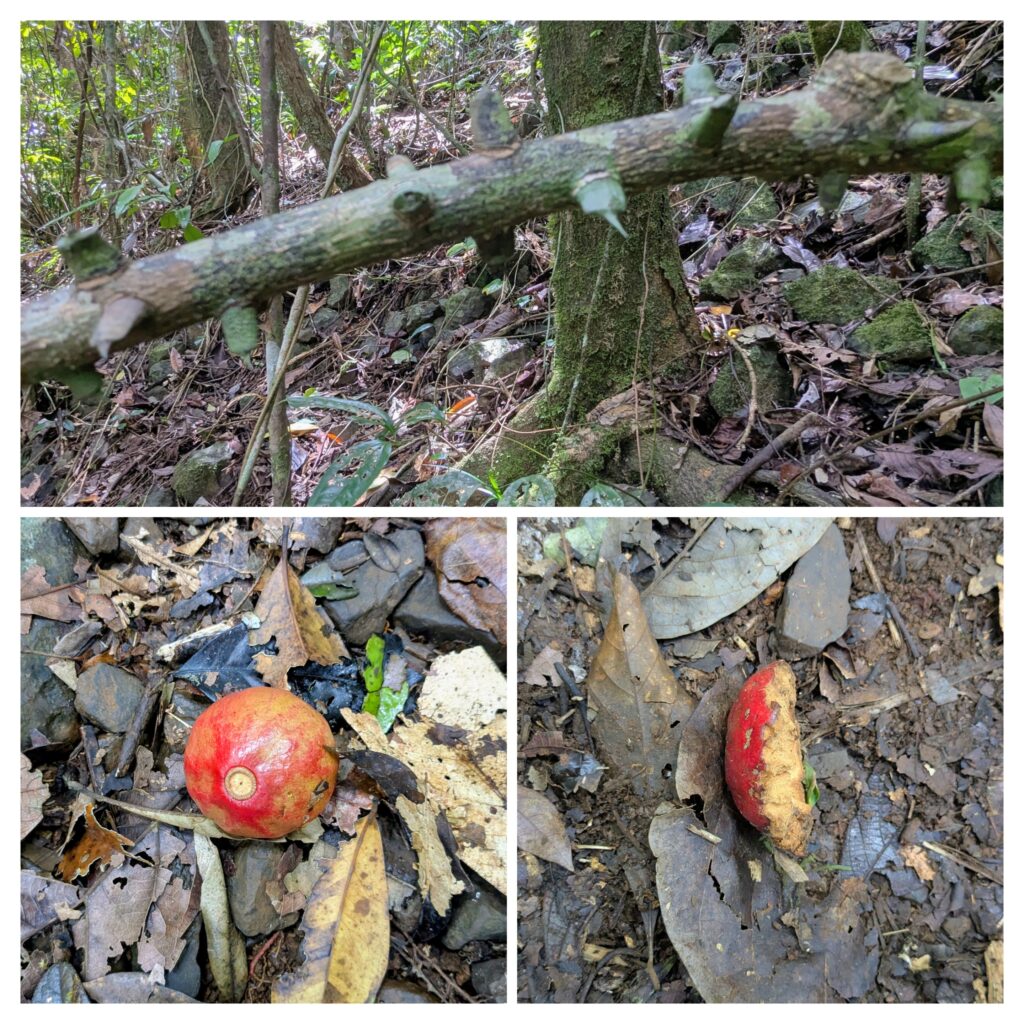
The ‘lawyer vine’ is also dangerous, hanging vines have sharp thorns that can tear your clothes and skin! We walked through the forest, careful not to touch any plants or have them touch us!! The red ‘apple’ might be the fruit of the poison laurel, but something eats it!
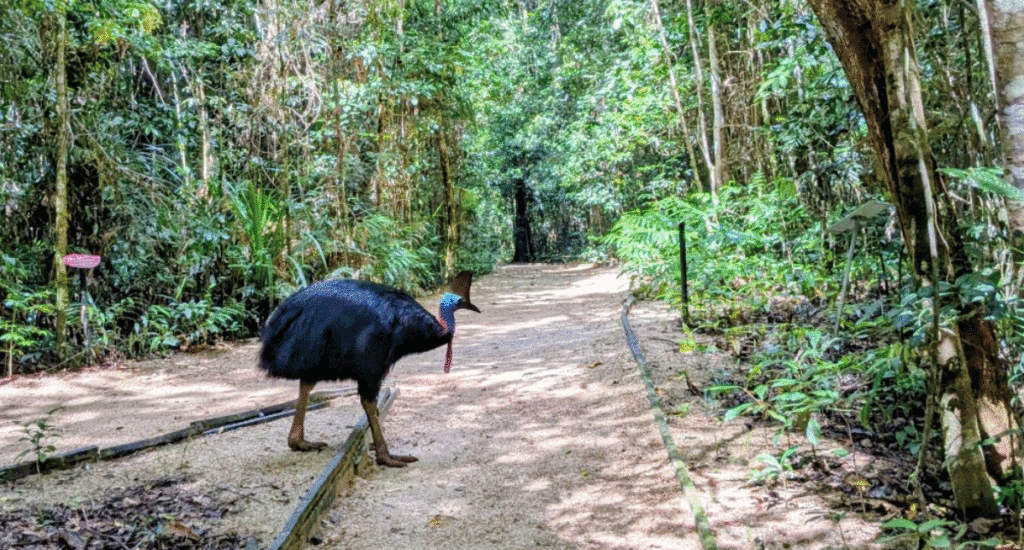
A surprise bonus of our early arrival to the rainforest was sighting of a cassowary, a large flightless bird with an impressive horny growth on its colorful head and a bright red wattle hanging from its neck, casually walking by on the path!
After our introduction to the rainforest at the Skywalk we stopped along the road to hike a short distance to a waterfall. This being the ‘wet tropics’ there are trails to several waterfalls in the area.
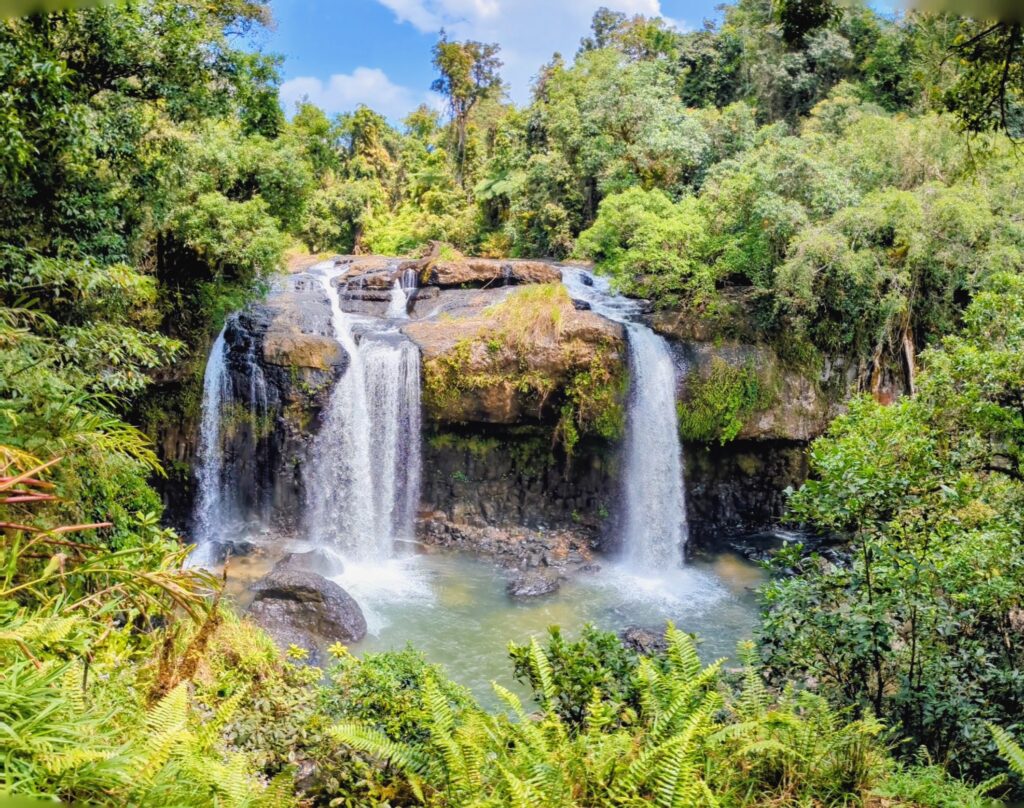
Tchupala Falls is a 30 min. hike from the road, and a million years into the past!
Sept 21, 2025 A Queenslander
Our residence for the next 3 days in Wangan, Queensland, 5km west of the town of Innisfail, is a true Queenslander! We have the upstairs 2 bedroom, one bath apartment with tall ceilings, gleaming wood floors, large frosted-glass windows and french doors to the big veranda and to the bedrooms.
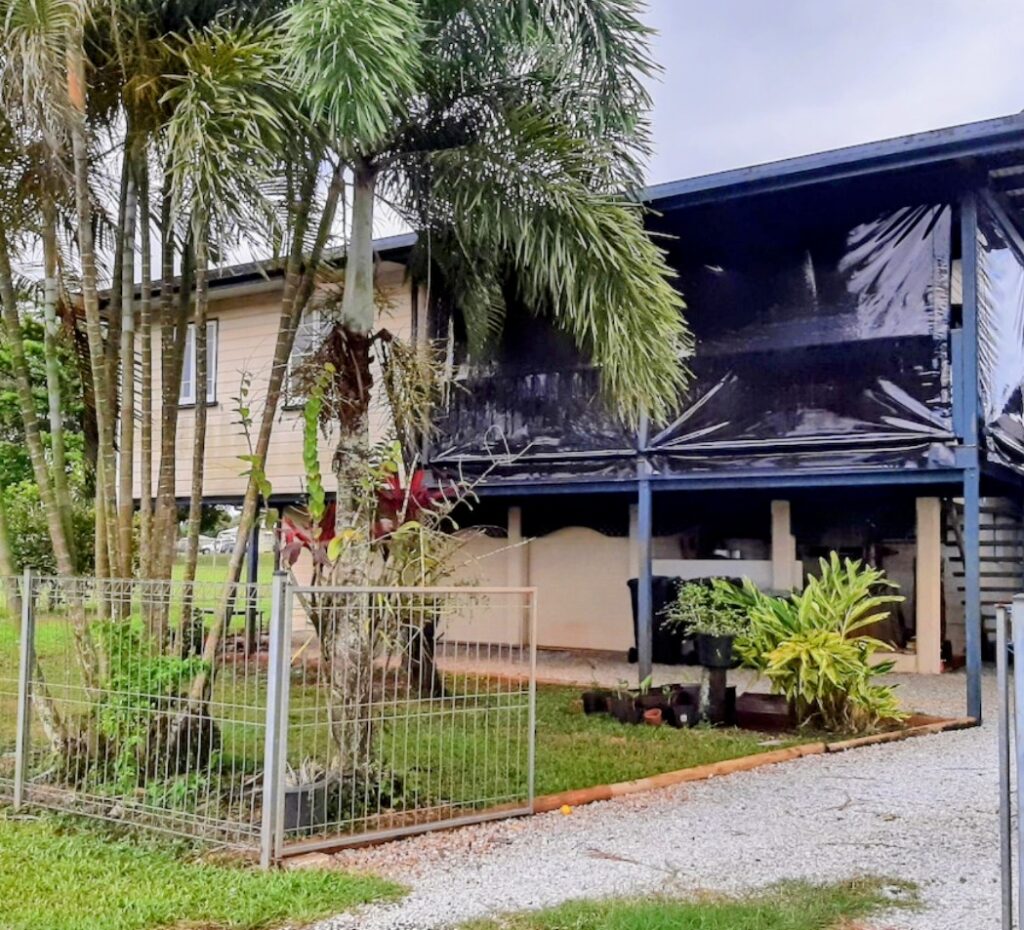
The outside doesn’t look too impressive. The veranda is protected with plastic shade curtains, also to keep the tropical torrential rain out!
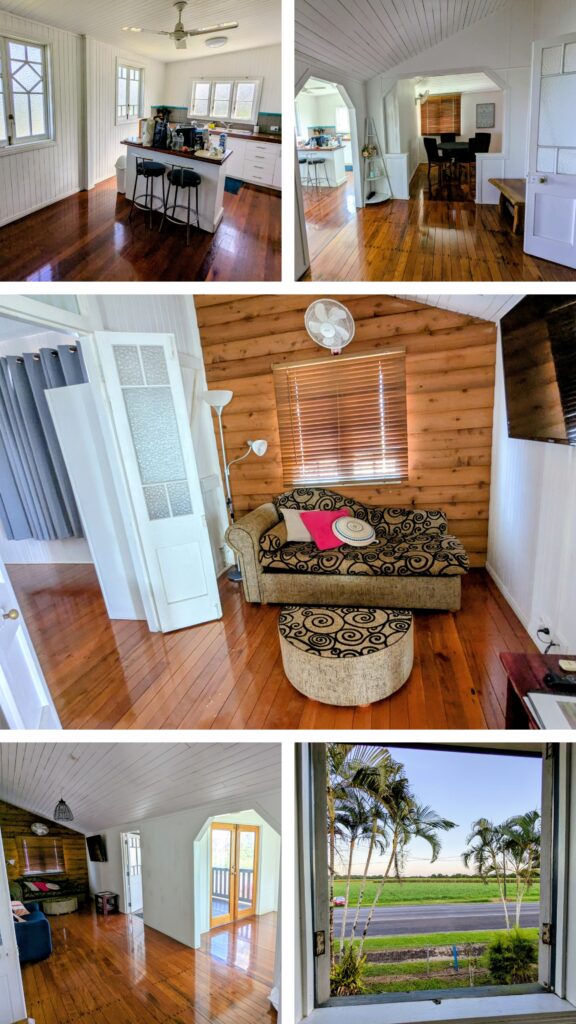
The interior is light and bright, the floors polished and the furnishings sparse and comfortable. We never even turned the TV on! The view out the kitchen window looked across the road to a sugar cane field past the palm trees.
Posted on September 27th, 2025 at 10:22 pm |
1 Comment »
Sept 20, 2025 Crack Off
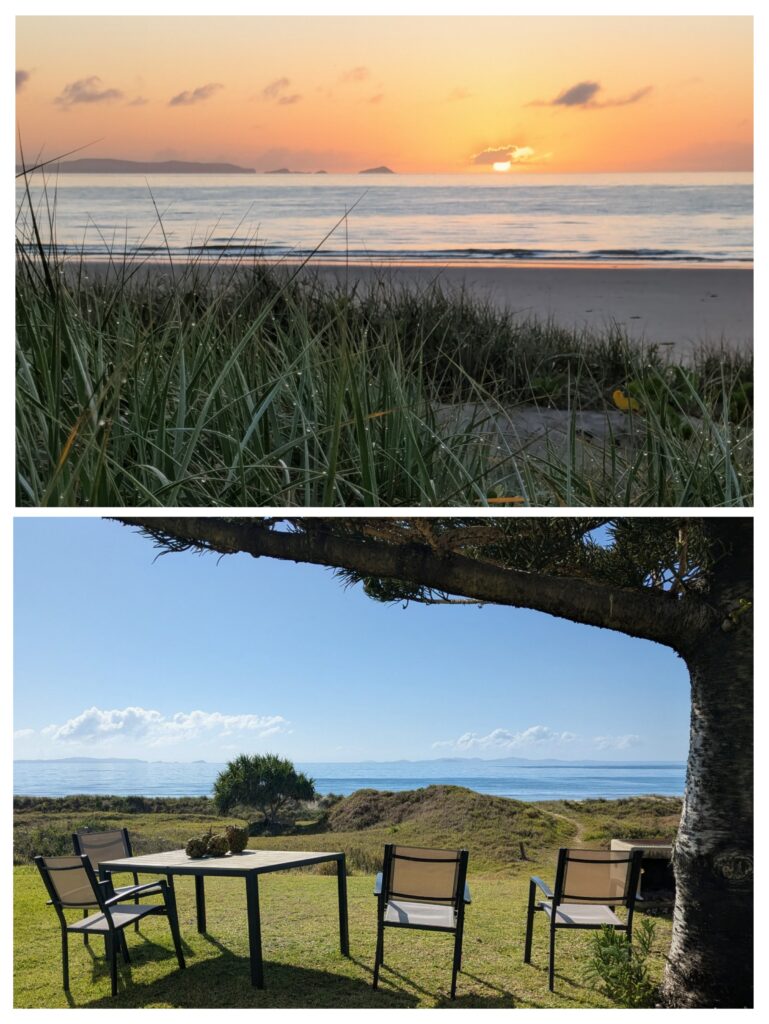
Our last sunrise on the beach in Yeppoon. Today is a travel day, heading further north. We bade goodbye to the chairs in the shade of a Norfolk pine overlooking the dunes where we watched gorgeous turquoise and orange colored rainbow bee-eater birds swooping to catch bugs on the wing!

The birds were colorful jewels, swooping and diving, then roosting together on a twig! (Not my pics!)
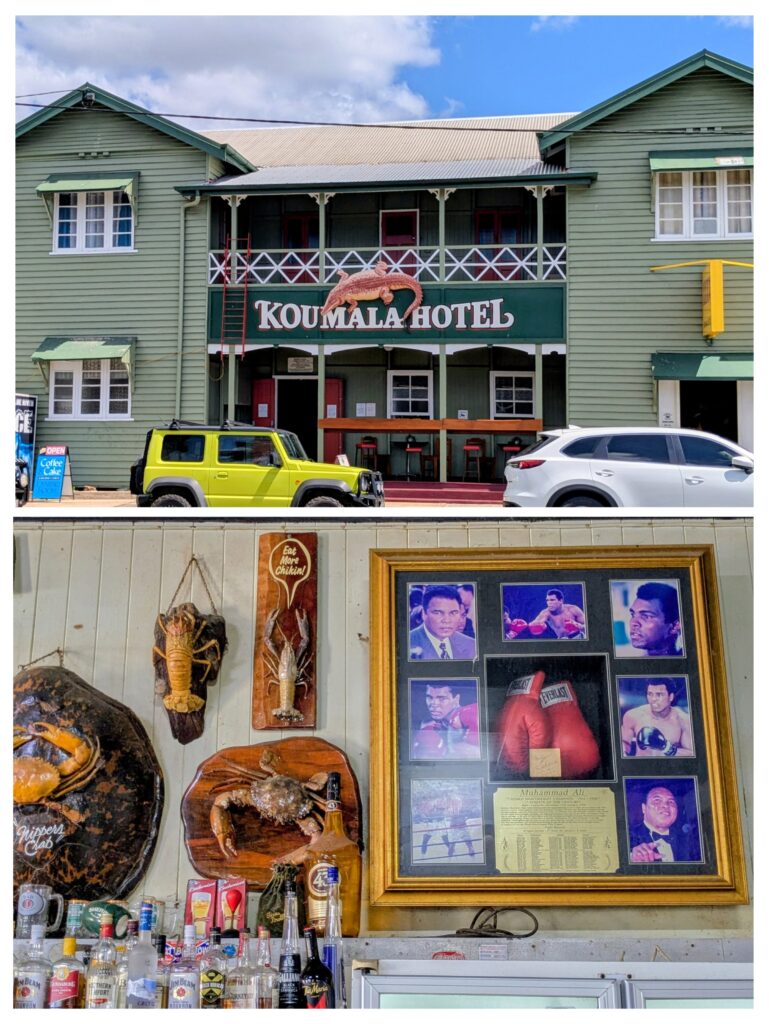
We stopped in the tiny town of Koumala for a break and coffees at the hotel. An iconic fixture of most small towns we’ve been through. Most have a restaurant/bar and some still provide accomodations. There were quite a few patrons because a Crack-Off Competition was in progress in the community park! A whip-cracking contest, apparently something that’s popular in the Outback at cattle stations!
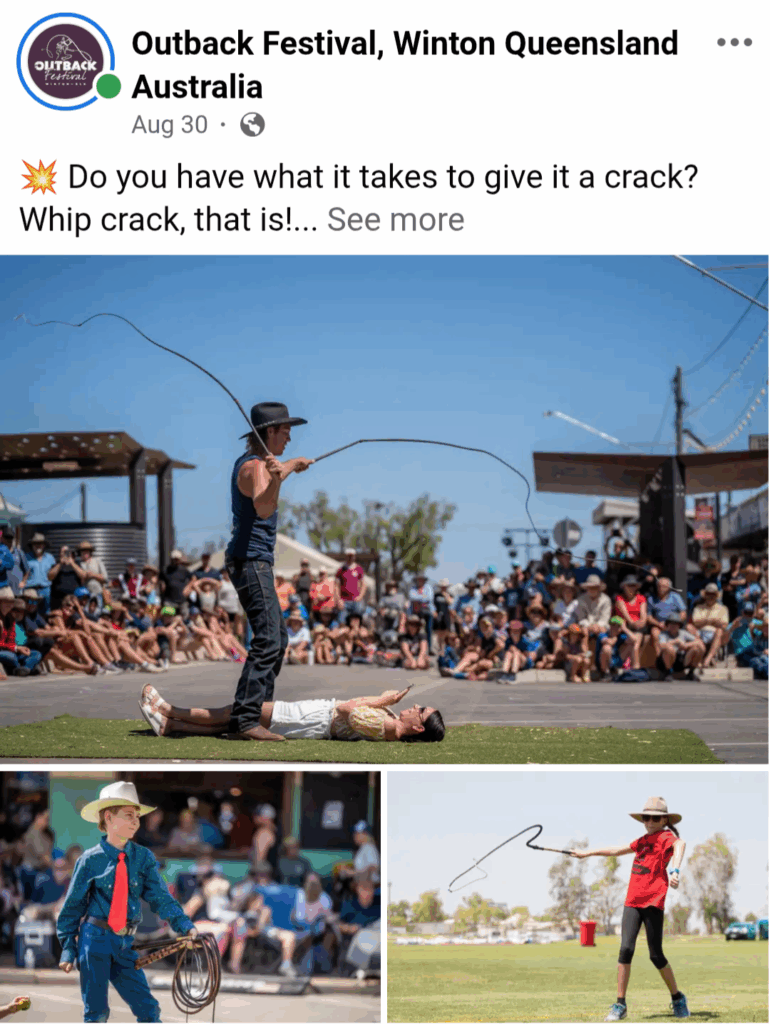
The competition we watched was small potatoes, just a regional Crack-Off. click HERE and HERE for videos of championship shows!




















